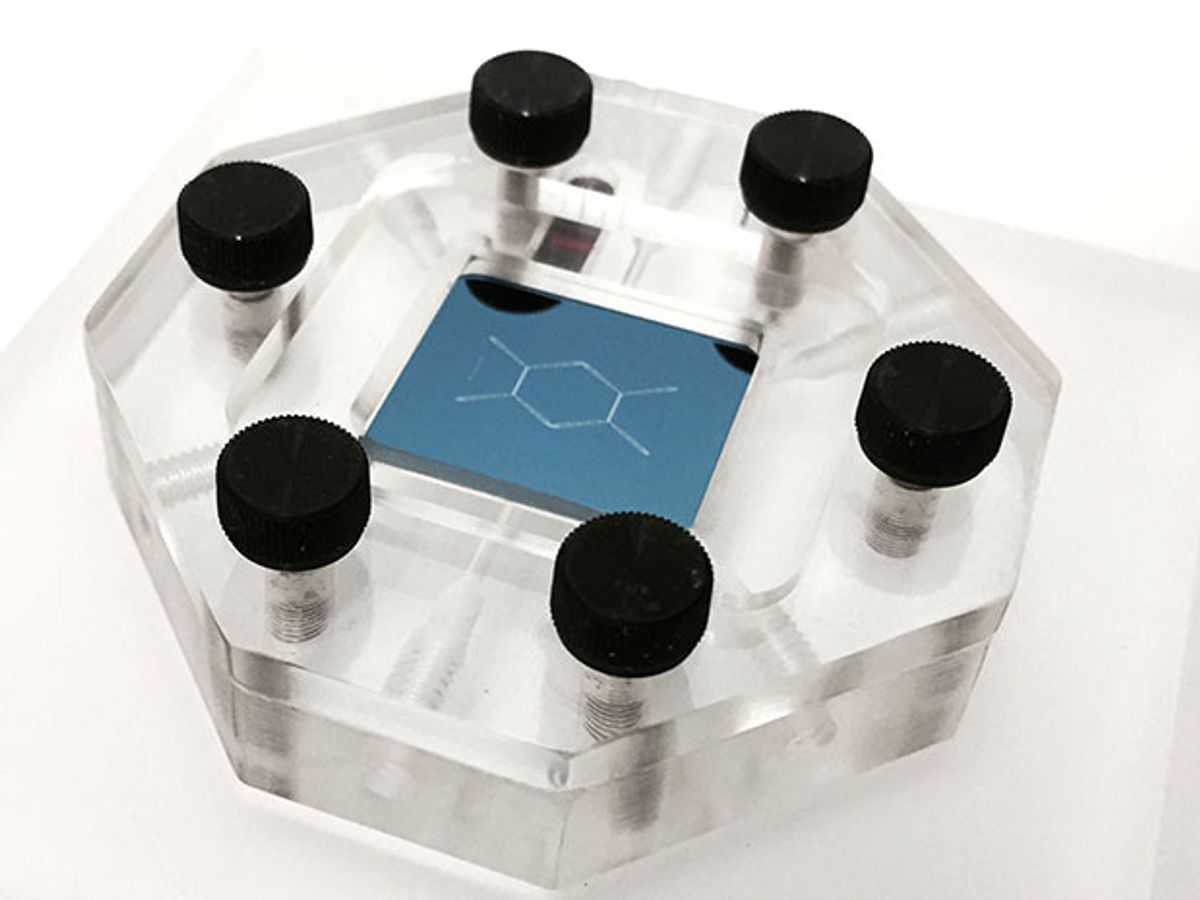It’s long been understood that early disease detection is the key to successful treatments. But annual checkups with a doctor might not be frequent enough to help. So imagine if you could forego a trip to the doctor’s office and detect any disease with a simple urine or saliva test at home.
Of course this has been the aim of lab-on-a-chip technologies for years now, but now scientists at IBM Research may have tipped the scales in the technology that could make such at-home tests real.
In cross-disciplinary research described in the journal Nature Nanotechnology, a team at IBM led by research scientist Joshua Smith and Gustavo Stolovitzky, program director of IBM Translational Systems Biology and Nanobiotechnology, has been able to retool silicon-based technologies to create a diagnostic device that can separate viruses, DNA, and other nanoscale-size biological targets from saliva or urine. This could enable the device to detect the presence of diseases before any physical symptoms are visible.
Of course, the separation of nanoscale particles has been possible for years in various forms, such as ultracentrifugation, gel electrophoresis, chromatography, or filtration. These approaches all come with compromises: Centrifugation and chromatography can be very precise but require expensive machinery and trained technicians; gels and filter media are cheap and easy to use but are less precise and more difficult to recover samples from.
The basis of the IBM team’s approach is something called deterministic lateral displacement (DLD) separation technology, which was first developed in 2004. DLD is a microfluidic process that uses the laminar flow of fluid through a field of tiny posts to separate particles based on size. In this array of pillars, the separation occurs because the smaller particles are moving in the direction of the fluid, while the larger particles get deflected along the direction of pillar asymmetry. This sorting makes it possible to isolate, detect, and analyze the particles downstream.
DLD has been used to sort and separate micrometer-scale organisms, like parasites, but it has never been used for sorting nanoscale targets, like viruses. (See Jonas Tegenfeldt and Stefan Holms’s video below.)
With nanoscale DLD, the researchers can take a liquid sample and pass it through a silicon chip especially designed with an array of asymmetric pillars. This pillar array separates particles by size down to a resolution within tens of nanometers.
Smith explained the new device in an email interview with IEEE Spectrum:
“What we have done is to use IBM’s vast knowledge and capabilities in silicon nanotechnology, applying it to healthcare, to dramatically scale deterministic lateral displacement (DLD) separation technology beyond what others have been able to achieve.
“Piggy-backing on silicon technology lends itself to high-volume manufacturing, which lowers costs and allows more ubiquitous use in medicine and diagnostic technologies. In addition, nanoscale DLD provides high-fidelity separation of nano-colloids and requires minimal training to operate. This lowers the barrier to entry for researchers wanting high-precision separation technology.”
To test their technology, the researchers targeted exosomes, which are 30- to 100-nanometer structures containing protein and genetic material that are present in many if not all biological fluids and that may play a role in blood coagulation, among other things. Exosomes serve as biomarkers for detecting cancers and other diseases.
Smith and his colleague Benjamin Wunsch, a surface chemist with IBM’s Nanotechnology Group, explained that the main challenges in producing this device were with fabrication, nanofluidics, and biochemistry:
“First off, it was a major challenge to make the pillar structure and gap sizes down to 25 nanometers with high aspect ratios. This required innovations in process engineering. Also, micro-fabricated silicon is not a natural environment for bioparticles, so a tremendous amount of work on varying the surface chemistry was required to achieve compatibility with exosomes. Lastly, in operating at the nanoscale, new phenomena emerge that are not present in microfluidic devices, and this required substantial testing and development of a physical model to both understand and control the separation process.”
While news surrounding the device has focused on detecting the Zika virus, that was not its main purpose. However, this nanoseparation technology will be able to detect it, because at 40 nm, the virus is within the device’s limits.
“Currently we can separate, fractionate, and collect samples downstream, and we are working on incorporating detection modules,” says Smith. “Off-chip sequencing of individual exosomes may help further the understanding of exosome biology and their role in disease. ” IBM will work with Mount Sinai Hospital in New York City “to validate if our lab-on-a-chip technology can pick up exosomes with prostate cancer–specific biomarkers in patient liquid biopsies,” he adds.
The IBM team believe that within a year it will be possible to determine whether this device can sort and detect viruses from biological fluids, the key requirements for generating a mobile, easy-to-use, and rapid diagnostic platform.
“We also will continue to push the size limit of particle separation to access the sub-10 nm particle regime,” says Smith.
Dexter Johnson is a contributing editor at IEEE Spectrum, with a focus on nanotechnology.



